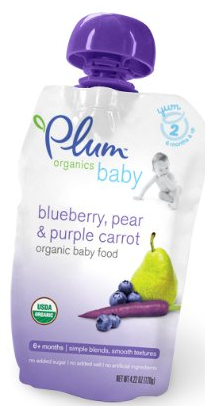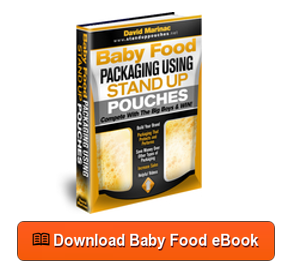 Baby food packaging is anything but child's play. If you're in the industry, you know exactly what we mean. While all protective packaging is important, there's probably no food packaging more important to consumers for whom product safety is paramount. One need only think back to the tainted formula from China a few years back to bring the issue into clear, if not chilling, focus. So, which baby food packaging is best when it comes to safety (and storage)?
Baby food packaging is anything but child's play. If you're in the industry, you know exactly what we mean. While all protective packaging is important, there's probably no food packaging more important to consumers for whom product safety is paramount. One need only think back to the tainted formula from China a few years back to bring the issue into clear, if not chilling, focus. So, which baby food packaging is best when it comes to safety (and storage)?
For our money, flexible barrier bags for baby food is your best bet. When we say flexible barrier bags we're referring to a specific type of protective packaging that includes stand up pouches, spouted stand up pouches, flat bottom bags, and flat 3 side seal bags, to name a few.
They are constructed of multiple layers of scientifically-formulated, FDA-approved, food grade film that are laminated together. This process yields a package that is strong, durable, puncture-resistant, so much so that it will protect your brand from vapor, odor, moisture, pests (!) and, if necessary, extra air and/or light. (It should be noted that the design and construction of flexible baby food packaging will also preserve your brand's shelf life by sealing in freshness, flavor, and your product's nutritional properties.
The safety of your product line doesn't stop when your customer opens the package, however. These types of protective packaging have optional zip lock closures available, ensuring safe and secure storage until the next use. A pour spout and resealable cap combination is available for liquid baby food products.
Storing flexible protective packaging is convenient as well. Like most other types baby food packaging, they stand up on the shelf, so they store easily in the kitchen cupboard or refrigerator or even in a backpack of diaper bag. And, since it's extra-strong and puncture resistant, consumers can take these barrier bags wherever they go. Compare that with the risk encountered when transporting glass jars, the traditional baby food packaging.
Flexible protective packaging is even safe for the environment. Sure, it's recyclable, but we all know most consumers don't recycle on a consistent basis. It's fortunate, then, that although this type of baby food packaging is made from multiple film layers, some styles actually require up to 15 percent less material to make than other types of protective packaging. This helps the environment in several ways:
- Ultimately produces less waste (for example, flexible baby food packaging requires little more room in a landfill than an empty shipping envelope)
- Each package is of lighter weight which cuts down on the amount of fuel per unit required for shipping
- Remember, the barrier film is FDA-approved, food grade film and is, therefore, nontoxic!
 At the end of the day, flexible baby food packaging is everything a consumer looks for in food product packaging: Safety, convenience, and even environmentally responsible. Compare the features outlined described above with glass jars, plastic jugs, boxes, or cartons (definitely NOT puncture-resistant) and we think you'll agree that flexible protective packaging is the ideal choice for baby food.
At the end of the day, flexible baby food packaging is everything a consumer looks for in food product packaging: Safety, convenience, and even environmentally responsible. Compare the features outlined described above with glass jars, plastic jugs, boxes, or cartons (definitely NOT puncture-resistant) and we think you'll agree that flexible protective packaging is the ideal choice for baby food.





